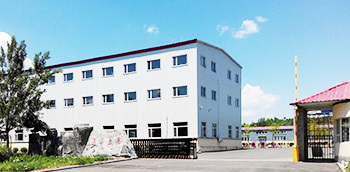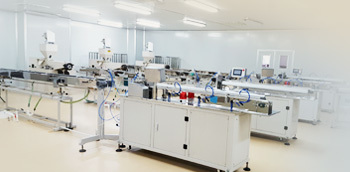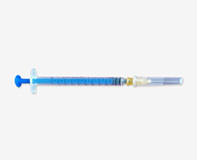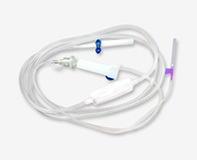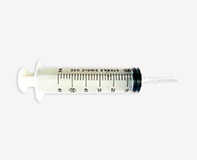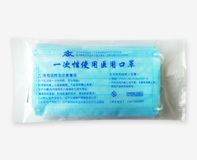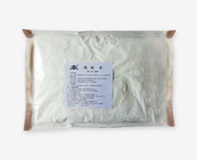The Way to Merger and Acquisition in the Medical Device Industry: Integration of Assets, Businesses, and People
Published on:
2020-01-07
Source:
2014 was a policy year for the healthcare industry. Driven by a series of regulatory and bidding regulations, coupled with the industry's own changes, medical services and medical device mergers and acquisitions have become particularly active. Numerous professionals in the industry have also conducted in-depth analysis of the recent investment and M&A boom based on their understanding of policies and markets, as well as their industry experience. They have also provided their own suggestions on how medical enterprises can adapt to the trend of integrating and improving policies, markets, and industries, and enhance their competitiveness.
Mergers and acquisitions really rely on timing, location, and talent
As the Senior Director of Investment and Mergers and Acquisitions at Baisheng International Group, Yang Kun has a heartfelt feeling: "What does it mean to have favorable timing, location, and people
He gave an example of Medtronic. Previously, Medtronic had been slow to take action in China, with sales accounting for less than 5% of the global market. It wasn't until CEO Omar Ishrak took office and investors on Wall Street proposed increasing their investment in China that everything took a 180 degree turn.
The case we left behind is not wanted by anyone. Go directly to the headquarters in China and say what targets we have to acquire, "Yang Kun said." So this is very important, especially during the company's major transformation
Yang Kun, who has just joined Baisheng International Group for less than a year, is responsible for the company's investment and mergers and acquisitions business. He understands that the so-called "timing" is not only a key node in company transformation, but also a "wind vane" of policy changes. The main policy during the 12th Five Year Plan period is to support domestic medical equipment enterprises and accelerate industrial integration. In addition, after the Third Plenary Session of the 18th Central Committee of the Communist Party of China, social capital entered the medical service market, and the new version of the "Regulations on the Supervision and Administration of Medical Devices" was issued, which made him feel that "at least it is a positive signal, allowing everyone to see some hope".
But relying solely on "timing" is far from enough. Based on his extensive industry experience, Yang Kun raised a simple and clear question about corporate strategy: "Are you buying sales, technology, or platforms?" Yang Kun believes that it is necessary to have a global positioning, not ignore the development of mid range products, and also consider market access issues. When considering investment and mergers and acquisitions of target companies, it is not about focusing on a single product, but more on the research and development capabilities, supporting products, channels, and market positioning of the product line.
These should be considered factors of "geographical advantage" and "harmony of people". Yang Kun believes that the success of a merger cannot be solely focused on the process of the previous merger, as 70% to 80% of the time may need to be spent on the integration later on. You need to determine what you are buying and what kind of integration plan is available below, "he said." Preserve the key factors in order to produce a one plus one greater than two effect in the future integration
Listing or mergers and acquisitions, the development direction of Chinese IVD enterprises
Ying Xitang's term IVD, also known as in vitro diagnosis, is a keyword that he has accumulated decades of experience in learning, working, and entrepreneurship.
As the chairman of Beijing Kemei Biotechnology Co., Ltd., Ying Xitang is more willing to use the company he founded as an example to talk about the development path of Chinese medical and pharmaceutical enterprises. Komei was established in 1999 and has made significant progress in research and development, intellectual property, and enterprise management since receiving investment from Siemens in 2007. Through Kemei's own growth, development, and growth, he raised several key questions - "Is China's IVD innovation path independent research and development, following or integration? What is the gap between domestic enterprises and multinational corporations? Who are the future participants in China's IVD and what are the opportunities for development
If we cannot see your company in the future, it indicates that your investment has failed, and being acquired by others is also a way out. This is Ying Xitang's personal experience. "When we look for investment and development, we must first look at opportunities
Ying Xitang is well aware of the current situation of domestic IVD enterprises, which are small in scale, small in quantity, and do not make money. In addition, the highly controlled market environment by the government has prevented the development of many small and new IVD enterprises. In order to develop, Kemei introduced a grassroots R&D management method based on IBM and Huawei in 2006; In Ying Xitang's view, the future development path of Chinese IVO enterprises is still to follow innovation.
This is not all yet. Ying Xitang believes that multinational corporations, large domestic pharmaceutical companies, and large medical device companies will be the main participants in China's future IVO. For IVO companies that are currently relatively small in scale, the choices in front of them are nothing more than listing and mergers and acquisitions.
The development direction of Chinese IVD enterprises - going public is the only way to have their own development space; mergers and acquisitions are the only way to become bigger and stronger. "This is Ying Xitang's suggestion to himself and his peers, "The popular practice in Europe and the United States is that I am a small enterprise, I do not make brands, and I specialize in original equipment manufacturer production for large enterprises. However, it is rare in China, because IVD industry quality control is very difficult. When it comes to finished products, registration, and national laws and regulations, you want to entrust an enterprise, and its product quality is difficult to reassure you."
How to do mergers and acquisitions? Integration of assets, business, and people
Dong Zheng, the Managing Director of Hanergy Investment Group, who claims to be an "outsider", chose to speak with data: "The pharmaceutical industry has a domestic market of 2 trillion yuan, and medical devices exceeded 200 billion yuan last year. The medical device industry is expected to have a very large growth space in the future
In her opinion, the entire pharmaceutical and medical device industry is developing very quickly, and compared to other industries, considering profit margin growth, it is very worthwhile to invest in the industry.
In Dong Zheng's view, the Regulations on the Supervision and Administration of Medical Devices issued on April 4 will help eliminate some enterprises with weak competitiveness and market capacity, improve the concentration ratio of the whole industry, and trigger a large number of mergers and acquisitions in the industry. This viewpoint was recognized by many industry insiders during the two-day summit, but Dong Zheng believes that people's understanding of "mergers and acquisitions" is not comprehensive.
She cited "Framework Media", which Hanergy Investment participated in mergers and acquisitions about 10 years ago, as a case study to illustrate the core of her M&A philosophy - firstly, sending partners to the fund as the chairman to lead the industry forward; Secondly, the speed of doing things must be fast, because there must be someone in the industry who is doing the same thing; The third is that the execution speed and overall financial efficiency of the operation must be very high, which means that the funds must keep up. This is not the experience of investing in pharmaceutical and medical device companies, but now it seems to be within the industry.
As investors, Dong Zheng and her Hanergy Group also use the same evaluation criteria when identifying pharmaceutical and medical device enterprises - first, core competitiveness, and second, the root cause of growth. (Enterprises) need to have their own core things, grasp the core things before making acquisitions to generate additional value. "She said," Every company is acquiring, whether the things they receive can be absorbed, whether they can become their own, whether they become their own core, the important reason for becoming the capital market, or because strategic development requires acquisitions... These are all areas that we as investors need to see clearly
Similar to Yang Kun's viewpoint of "favorable timing, favorable location, and harmonious people", Dong Zheng believes that mergers and acquisitions are not only the integration of assets and businesses, but more importantly, the integration of people. After the integration of assets and business is in place, whether one can know people well and choose a leader with strong execution ability is also related to the market competitiveness after mergers and acquisitions.
(Extracted from Kexun Network)
Next
Related News


